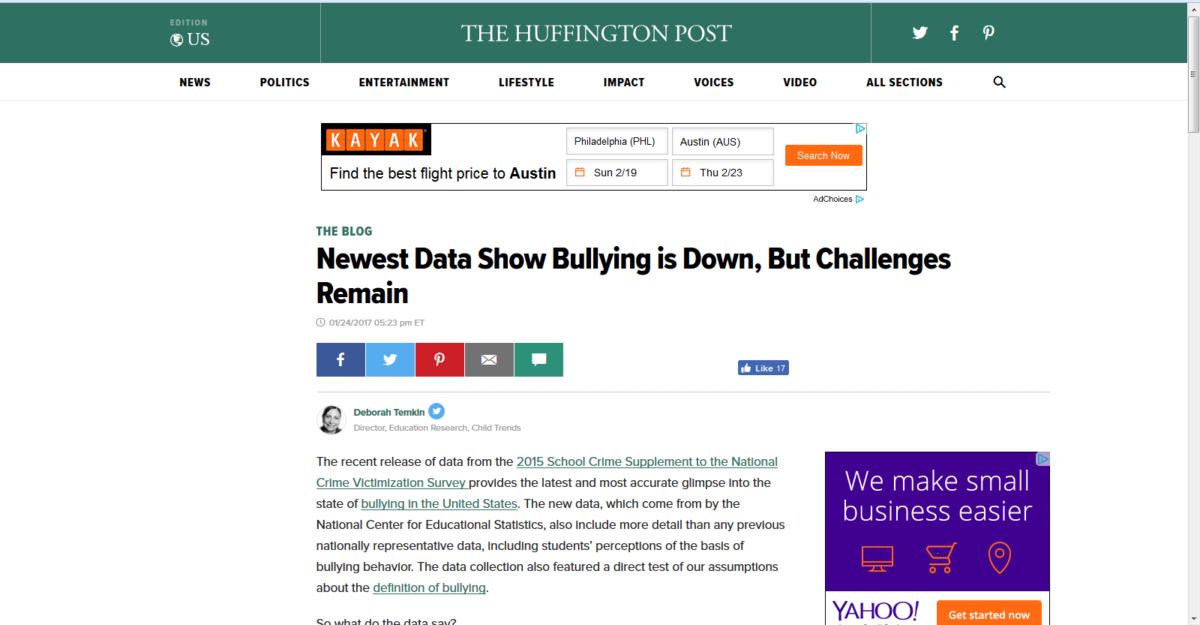
This interesting Huffington Post article from Deborah Temkin () explains that bullying is decreasing, but we’re not out of the woods just yet. Nonetheless, it’s very encouraging!
Check it out:
The recent release of data from the 2015 School Crime Supplement to the National Crime Victimization Survey provides the latest and most accurate glimpse into the state of bullying in the United States. The new data, which come from by the National Center for Educational Statistics, also include more detail than any previous nationally representative data, including students’ perceptions of the basis of this behavior. The data collection also featured a direct test of our assumptions about the definition of bullying.
So what do the data say?
1) More than 1 in 5 (21 percent ) of students ages 12 to 18 reported being bullied in school year 2014-15. This is stable from the 2012-2013 school year, but represents a significant decline from 2007’s rate of 32 percent. Although we cannot draw causal conclusions, these declines have coincided with a renewed emphasis on bullying prevention during President Obama’s administration, starting in 2010 with the first-ever Federal Summit on Bullying Prevention.
2) The percentage of students who reported being cyberbullied remains smaller than those who reported experiencing more traditional bullying, but the number increased from 7 percent in 2013 to 11.5 percent in 2015. It should be noted that the methodology for asking about cyberbullying changed on the 2015 School Crime Supplement to better reflect how cyberbullying fits into the Centers for Disease Control and Prevention’s uniform definition of bullying. On the 2013 protocol, students were asked about cyberbullying as a separate item from the bullying items. On the 2015 protocol, students who indicated that they had been bullied were subsequently asked whether the incidents occurred online or through text.
3) Verbal and social bullying remain the most prevalent forms of its kind. Being called mean names and having rumors spread have consistently been the most frequently reported types of bullying, and 13 percent and 12 percent of students reported these forms, respectively, in 2015. Although all of these forms have seen at least some decline since 2007, declines are most pronounced for these behaviors—an 8-point decline for mean names (from 21 to 13 percent)and a 6-point decline for rumor-spreading (from 18 to 12 percent). It is also noteworthy that the percentage who report being pushed, shoved, tripped, or spit on has declined by over 50 percent since 2007—from 11 percent in 2007 to 5 percent in 2015.
To read the rest of the article, click here.

